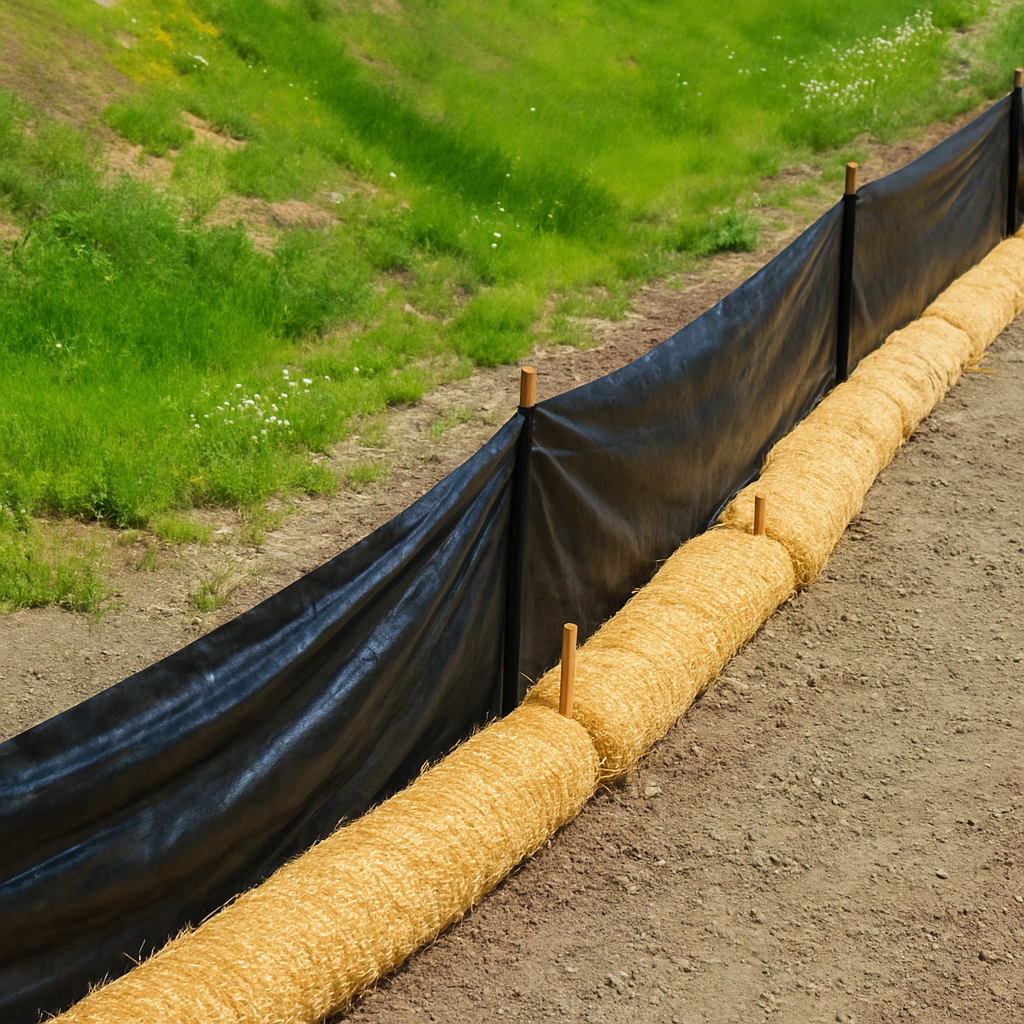Construction activity in Pennsylvania comes with a responsibility to protect land and waterways. Disturbed soil, when combined with stormwater flowing, can easily leave construction sites and enter streams, rivers, or municipal storm systems. Without proper measures, projects risk fines, delays, and environmental damage. Tools like erosion control wattles, silt fences, and inlet protection are essential to prevent sediment from leaving the site while allowing water to flow through.
Straw Wattles and Fiber Logs
Among the simplest yet most effective tools are straw wattles. Installed across slopes or along drainage paths, straw wattles erosion control products slow water runoff and let sediment filter out naturally. They are easy to install, lightweight, and highly adaptable for a variety of job sites.
In Pennsylvania’s hilly terrain, straw wattle erosion control is often paired with erosion control blankets to stabilize bare soil. When rain hits construction sites, the wattles act as miniature check dams, reducing flow velocity. This combination creates short-term stability until vegetation establishes for long term soil protection.
For heavier-duty installations, contractors may use fiber logs or coir logs. Made from coconut fiber logs, these environmentally friendly products are durable and reusable. In streambank restoration projects, coir logs provide stability while supporting plant growth, making them both practical and sustainable.
Silt Fences: The Standard Perimeter Control
Silt fences remain one of the most widely used perimeter controls on construction sites. They are designed to filter sediment while allowing stormwater to pass. A properly installed silt fence barrier reduces soil loss from disturbed areas, helping meet local regulations across Pennsylvania.
Contractors choose from several types of silt fences depending on site needs:
- Standard silt fence rolls: Effective for smaller sites with limited water volume.
- Reinforced silt fence: Designed with wire backing for heavy duty use.
- Super silt fence: A higher-capacity option that combines strong silt fence fabric with wire back silt fence supports for larger job sites.
Using silt fence stakes to secure fences properly is critical. A poorly trenched fence will collapse under pressure, allowing sediment to escape. Correct installation ensures long term performance and reliability.
Inlet Protection for Storm Drains
Even the best perimeter controls may not stop all sediment from reaching inlets. That’s why storm drain inlet protection is essential near curb inlets and drop inlets.
- Curb inlet protection: Uses barriers or bags to keep soil out while allowing water to flow through.
- Drop inlet protection: Designed for grate-covered inlets, these controls act as filters that prevent clogging and sediment entry.
These devices act as the last line of defense before sediment reaches storm infrastructure. For example, on job sites near city streets, curb inlet protection prevents soil from entering storm drains and clogging the municipal system.
Erosion Control Socks
Erosion control socks are another effective tool. These easy to install barriers are filled with compost or mulch and laid directly on the ground. They slow stormwater flowing across disturbed areas and prevent sediment from leaving the site.
Because they are flexible, erosion control socks can be used on slopes, around inlets, or even along the perimeter of construction sites. They also double as temporary check dams in drainage swales.
For Pennsylvania contractors, erosion control socks are a versatile choice, offering strong soil stabilization while being environmentally friendly.
Erosion Control Blankets for Long-Term Stabilization
While wattles, fences, and socks address short-term runoff, erosion control blankets provide long term protection. Made from straw, coconut fibers, or synthetic materials, these blankets are rolled over exposed soil to prevent erosion and promote vegetation growth.
In areas with steep grades, erosion control blankets combined with straw wattles or coir logs provide layered protection. They reduce raindrop impact, control water runoff, and anchor soil until permanent cover grows.
Scenarios in Pennsylvania Projects
- Residential Developments: A new housing subdivision in Pittsburgh may use silt fence rolls for lot boundaries, straw wattles for slope stabilization, and curb inlet protection along paved streets.
- Highway Construction: Projects near Harrisburg often rely on super silt fence or reinforced silt fence with wire back silt fence for high-volume flows, along with erosion control wattles as check dams in ditches.
- Streambank Restoration: In rural Pennsylvania, coir logs and fiber logs are used with erosion control blankets to stabilize banks and encourage natural vegetation.
- Commercial Sites: A new shopping plaza in Erie may install erosion control socks around storm drain inlet protection systems to filter sediment before it enters municipal storm drains.
Each scenario demonstrates how multiple tools complement one another, ensuring that both sediment control and stormwater management objectives are achieved.
Conclusion
From straw wattles and coir logs to super silt fence and erosion control socks, contractors in Pennsylvania have a wide variety of tools to control runoff on construction sites. The key is using each measure in the right place: perimeter controls like silt fences to capture sediment at site boundaries, inlet protection to guard storm systems, and erosion control blankets or fiber logs for long term stabilization.
With products that are easy to install, environmentally friendly, and adaptable to site-specific needs, Prime Contractor Supply delivers the high quality solutions contractors need to comply with regulations and protect Pennsylvania’s waterways. By combining erosion control wattles, fences, and socks, projects stay efficient, safe, and sustainable—ensuring effective performance across diverse job sites.

